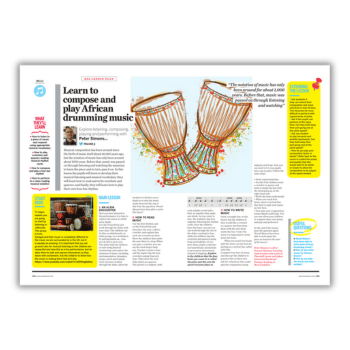Explore listening, composing, playing and performing with this KS2 African drumming lesson plan…
Musical composition has been around since the birth of music itself about 40,000 years ago. However, the notation of music has only been around about 1,000 years.
Before that, music was passed on through listening and watching the musician to learn the piece and in turn, pass it on.
In this lesson from silver Pearson National Teaching Award-winner Peter Simons, pupils will learn to develop their musical listening and musical vocabulary. They will learn how to read and write crotchets and quavers. Finally, they will learn how to play their own four-bar rhythm.
African drumming lesson objectives
- Listen to a piece of music and respond using appropriate musical vocabulary
- Play crotchets and quavers reading musical rhythm cards
- Compose and play a four-bar rhythm
- Perform to a class reading musical notation
Starter activity
To begin, explain you are going to start by listening to Jalikunda. This group is from Senegal. Their music is completely different to the music we are surrounded by in the UK, but it is equally as amazing.
It is important that you set ground rules for musical listening. This is so the children are respectful and view this as a live performance. However, do allow them to talk and express themselves as they listen with excitement. Ask the children to think how the music is making them feel and why.
Peter Simons is a silver Pearson National Teaching Award winner. He works at Thornhill Junior and Infant School and Boothroyd Primary Academy in West Yorkshire.














